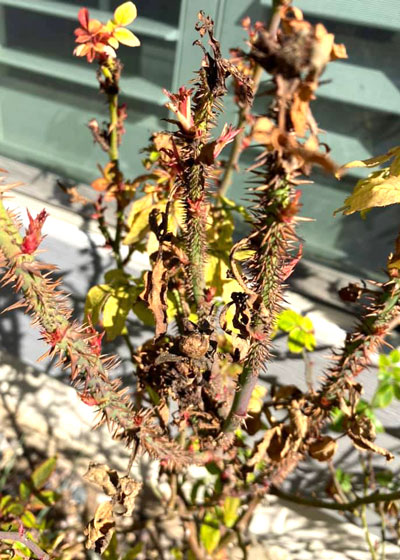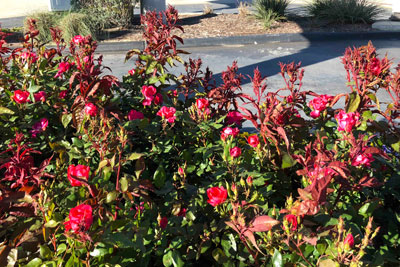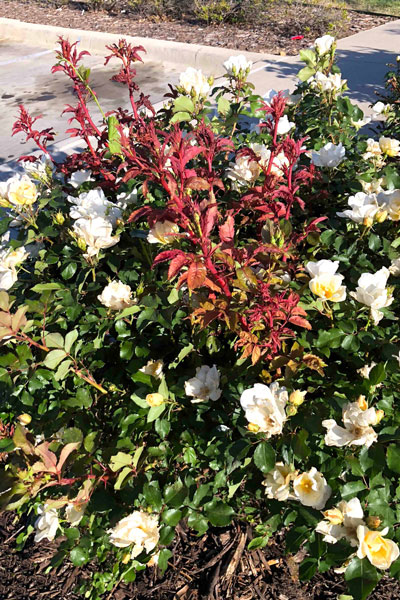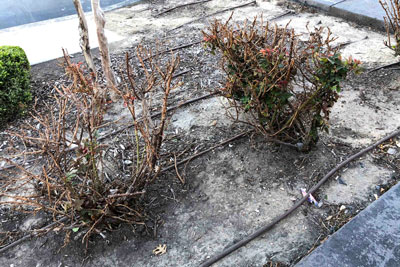Question of the Week – Number 2: February 6, 2020

“As we got ready to prune our roses last week we noticed that they were covered with thorns. Is this rose rosette virus?”
Yes. There is absolutely no question that this is rose rosette virus (RRV), the fatal disease that has been attacking roses for more than 75 years.
For whatever the reason, rose rosette (note that it is not “rosetta”) reached epidemic proportions in the DFW Metroplex about 10 years ago – so much so that it is difficult to find healthy, vigorous roses in gardens anywhere in that part of the state.

How RRV is spread…
This is the crazy part. This awful disease is carried by a microscopic mite that is blown by the wind. If you want to do any research on it, it’s known as an eriophyid mite, Phyllocoptes fructiphilus.
The fact that populations of the mite can be picked up and blown across entire neighborhoods from one infected plant is why it’s so critical that we maintain our vigilance in observing our plants.

Ways to recognize RRV…
There are telltale symptoms of infections of this disease.
• Strong “bull” canes that rapidly outgrow the rest of the stems on a plant.
• Contorted leaves that look almost as if they have been sprayed with a hormonal broadleafed herbicide.
• New leaves often take on a deep red color.
• Large and extremely numerous thorns along infected canes.
• Buds fail to open properly.
• More and more stems become infected until the entire plant shows signs.
• Plants become stunted and leaves start to turn brown.
• Within 12-18 months plants are dead.

What to do…
• First of all, remember that this is an incurable virus. Infected plants will die.
• Plants must be removed as soon as you see the evidence of infection.
• You cannot prune the infected portions of a plant out and save the rest of the plant. Once part of a plant is infected, all of the plant is infected.
• There is no spray that will prevent or cure the disease (in spite of what you may read).
• You must dig the plant, roots and all, and send it off to the landfill in a black plastic trash bag.
What plants can we use to replace roses?
There is a multi-million dollar research program underway at Texas A&M and elsewhere to find a proven work-around for this disease so that resistant roses can be brought into the market. Until we have that, however, I am not comfortable recommending replanting of roses into neighborhoods where there is active RRV.
Certainly you can plant a myriad of annuals and perennials for the great seasonal color they can bring to your landscape. However, as I’ve answered this question for people and watched their reactions (mostly frowns), I’ve realized that if it doesn’t look like a rose, I won’t be able to please them.

For my own part, however, I finally decided a couple of years ago, that the best replacement for bush roses is another plant that blooms about the same time and in the same colors. It’s a plant that also drops its leaves in the winter, and dwarf types of it stay about the same sizes as roses. That would be dwarf crape myrtles. Like it or not, that’s about the best thing I can offer until we get our beloved roses back.
Here is an interesting report on the research being conducted on Rose Rosette Virus.
